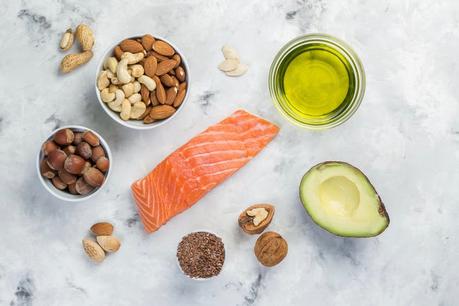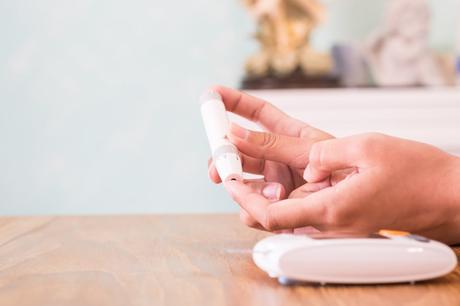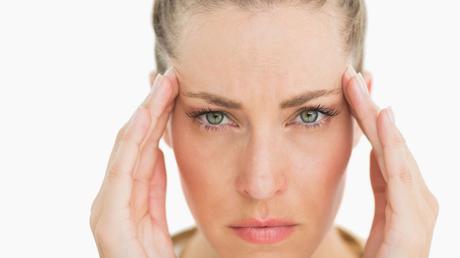Does the brain need carbs?
There's a long-standing, yet misguided belief, that carbs are necessary for proper brain function. In fact, if you ask most dietitians how many carbs you should eat, they'll likely respond that you need a minimum of 130 grams per day to ensure that your brain has a steady supply of glucose.
However, this isn't the case. In fact, your brain will remain healthy and functional even if you don't eat any carbs at all.
Although it's true that your brain has high energy demands and requires some glucose, when you're in ketosis, there are plenty of ketones to supply most of its fuel. Fortunately, your liver will always make the small amount of glucose your brain needs, even under conditions of complete starvation.
This system allowed our hunter-gatherer ancestors to go for long periods without eating because they had access to a fuel source at all times: stored body fat.
In truth, being in ketosis doesn't have any adverse effects on brain function. On the contrary, many people find that they feel sharper mentally when their brain runs mainly on ketones.
And although your red blood cells and a portion of your kidneys need glucose, this can easily be supplied by a keto-level carb intake and/or gluconeogenesis. All of the other structures in your body can use either ketones or fat for fuel instead.
Food for thought: Does the brain need carbs?2. Benefits of ketosis
In addition to providing a sustainable energy source, ketones - and in particular BHB - may help reduce inflammation and oxidative stress, which are believed to play a role in the development of many chronic diseases.
Indeed, there are several established benefits and potential benefits of being in nutritional ketosis.
Established benefits:
- Appetite regulation: One of the first things people notice when they're in ketosis is that they're no longer hungry all the time. In fact, research has shown that being in ketosis suppresses appetite. One study looked at people who lost weight by following a ketogenic diet for eight weeks and then reintroduced small amounts of carbs. The researchers reported that the levels of ghrelin (the "hunger hormone") were suppressed in those who remained in ketosis, whereas those who were no longer in ketosis had higher ghrelin levels.
- Weight loss: Most people automatically eat less when they restrict carbs and are allowed as much fat and protein as they need to feel full. Because ketogenic diets suppress appetite, decrease insulin levels, and increase fat burning, it isn't surprising that they've been shown to outperform other diets intended for weight loss.
- Reversal of diabetes and prediabetes: In people with type 2 diabetes or prediabetes, being in ketosis can help normalize blood sugar and insulin response, leading to the discontinuation of diabetes medication.
- Potentially enhanced athletic performance: Ketosis may provide an extremely long-lasting fuel supply during sustained exercise in both high-level and recreational athletes.
- Seizure management: Maintaining ketosis with the classical ketogenic diet or less stringent modified Atkins diet (MAD) has been proven effective for controlling epilepsy in both children and adults who don't respond to anti-seizure medication.
There is also exciting early research suggesting that ketosis may be beneficial for many other conditions, such as reducing the frequency and severity of migraine headaches, reversing PCOS, perhaps enhancing conventional brain cancer therapies, possibly slowing down the progression of Alzheimer's disease, along with potentially helping people live longer, healthier lives.
3. Nutritional ketosis vs. ketoacidosis
Nutritional ketosis and diabetic ketoacidosis are entirely different conditions. While nutritional ketosis is safe and beneficial for health, ketoacidosis is a medical emergency.
Unfortunately, many healthcare professionals don't really understand the distinction between the two.
Ketoacidosis occurs mainly in people with type 1 diabetes if they do not take insulin. In diabetic ketoacidosis (DKA), blood sugar and ketones rise to dangerous levels, which disrupts the blood's delicate acid-base balance. People in ketoacidosis feel extremely ill and experience profound dehydration, vomiting, abdominal pain, and weakness. DKA requires hospitalization so that IV fluids and insulin can be given to gradually and safely lower blood sugar.
In nutritional ketosis, BHB levels typically remain below 5 mmol/L. However, people in diabetic ketoacidosis often have BHB levels of 10 mmol/L or above, which is directly related to their inability to produce insulin. This graph shows the vast difference in amount of ketones in the blood between ketosis and ketoacidosis:
When blood ketone levels rise beyond a certain level, a pancreas capable of making insulin will release enough to shut down further ketone production. By contrast, the pancreas of a person with type 1 diabetes cannot make insulin. So unless insulin is given via injection or IV, ketones will continue rising to life-threatening levels.
Other people who can potentially go into ketoacidosis are those with type 2 diabetes who take medications known as SGLT2 inhibitors, such as Invokana, Farxiga, or Jardiance.
Also, in rare cases, women who don't have diabetes can develop ketoacidosis while breastfeeding.
However, for most people capable of producing insulin, it's nearly impossible to go into ketoacidosis.

4. Tips for getting into ketosis
There are a number of ways you can get into nutritional ketosis safely and effectively.
- Reduce daily net carb intake to less than 20 grams: Although it's possible that you may not need to be this strict, eating fewer than 20 grams of net carbs every day virtually guarantees that you'll achieve nutritional ketosis. What does 20 grams of carb look like? Use our visual guide to find out, or simply try our keto recipes and meal plans that limit carbs to less than 20 grams per day.
- Try intermittent fasting: Going for 16-18 hours without eating may help you get into ketosis more quickly. This is easy to do by simply skipping breakfast or dinner, which often feels very natural on an appetite-suppressing keto diet.
- Don't fear fat: Eating plenty of fat is a necessary and delicious part of ketogenic eating! Make sure to include a source of healthy fat at each meal.
- Cook with coconut oil: In addition to being a natural fat that remains stable at high heat, coconut oil contains medium-chain fatty acids that can boost ketone production and may also help protect brain health and provide other benefits.
- Exercise, if possible: During the transition into ketosis, you may not have enough energy to engage in vigorous physical activity. However, simply going for a brisk walk may help you get into ketosis more easily.
5. Protein's effect on ketosis
Although it's clear that getting sufficient protein on a ketogenic diet is crucial for preventing loss of muscle, many questions have been raised about its impact on ketone levels.
During digestion, protein is broken down into individual amino acids, which trigger the release of insulin. Although the amount of insulin needed to transport these amino acids into muscles is small, when large amounts of protein are consumed, the rise in insulin can reduce ketone production to some extent.
For this reason, ketogenic diets for epilepsy are restricted in protein as well as carbs, which ensures that ketone levels remain elevated at all times.
However, protein's effect on ketosis seems to be highly individual.
Some people do report that their ketone levels are significantly lower when they eat more than a modest amount of protein.
By contrast, others may be able to eat quite a bit of protein without experiencing any changes in ketosis. For example, when Diet Doctor's Bjarte Bakke conducted several n=1 experiments to see how much protein he could eat and still remain in ketosis, he found that keeping net carb intake below 20 grams per day was what ultimately mattered.
Keep in mind that this may not be the same for you, though. If you want to stay in ketosis and still eat plenty of protein, it could be a good idea to conduct your own n=1 experiments in order to determine your personal protein threshold.
Read more about protein on a ketogenic diet6. What is optimal ketosis?
The range for nutritional ketosis is quite broad, as illustrated in this chart created by Dr. Steve Phinney and Dr. Jeff Volek:
Although nutritional ketosis begins at a BHB levelsof 0.5 mmol/L, the "optimal ketone zone" of 1.5-3.0 mmol/L is believed to reflect maximum fat burning. Exercise may boost levels a bit higher, but this is temporary and short-lived.
Sustained levels above 3.0 mmol/L may occasionally occur in some people following a ketogenic diet, but they're more often seen in starvation ketosis, which occurs after fasting for several days.
Blood ketone levels at 10.0 mmol/L or above indicate ketoacidosis, a medical emergency which requires immediate hospitalization and can be fatal if not treated promptly.
Importantly, BHB levels above 3.0 mmol/L haven't been shown to provide any further benefit for weight loss or diabetes compared to remaining within the nutritional ketosis zone.
In fact, some people have suggested that sustained BHB levels over 3.0 mmol/L may indicate that your body isn't using ketones effectively.
What's more, even though 1.5-3.0 mmol/L is considered "optimal," achieving this BHB level isn't necessary for weight loss and blood glucose control.
For instance, in a recent study, patients who followed a ketogenic diet had average BHB readings just below 0.6 mmol/L. However, they lost an average of 12% of their body weight and experienced significant decreases in blood glucose, allowing them to discontinue their diabetes medications or greatly reduce their dosages.
7. Signs that you are in ketosis
There are several signs that suggest you're in ketosis, although measuring your ketones is the only objective way to verify it. Here are the most common ones:
- Dry mouth or a metallic taste in the mouth.
- Increased thirst and more frequent urination.
- "Keto breath" or "fruity breath," which may be more apparent to others than yourself. Learn more
- Initial fatigue, followed by an increase in energy.
- Decrease in appetite and food intake (one of the more welcome side effects!).
Measuring ketones
Here are the three methods to test whether you are in ketosis, listed in descending order from what's considered the most to least accurate.
Blood
Blood ketone meters measure the amount of BHB in your blood. Blood ketones tend to be lowest first thing in the morning and highest a few hours after eating a ketogenic meal.
The scale for nutritional ketosis is as follows:
- Mild ketosis: 0.5-1.0 mmol/L
- Moderate ketosis: 1.0-1.5 mmol/L
- Deep ketosis: 1.5-3.0 mmol/L
*Levels above 3.0 mmol/L do not represent any further benefit and may even indicate that ketones aren't being used effectively.
Breath
Breath ketone analyzers measure the amount of acetone in your breath via a color-coded system. For instance, the Ketonix meter reflects the following levels of acetone:
- Blue: not in ketosis
- Green: mild ketosis
- Yellow: moderate ketosis
- Red: deep ketosis
Urine
Urine ketone strips measure the amount of acetoacetate that is excreted in your urine. Any shade between light pink to purple indicates that you are in ketosis, and a darker color generally means that you're in deep ketosis. However, being dehydrated can also cause the urine strips to turn dark purple.
Moreover, testing your urine might be most helpful early on, because urine acetoacetate levels may decrease after several weeks of being in ketosis.
Learn more about urine testingWhat if you're not in ketosis?
If you're on a keto diet but aren't seeing experiencing any signs or symptoms being in ketosis, here are a few strategies that may help:
- Track your carb intake. While we don't recommend counting or tracking calories, it can be helpful to log your carb intake to make sure you're truly eating less than 20 grams of carb. Use an online site or app, such as Cronometer.
- Test ketones in the late morning or afternoon. Blood and urine ketones are usually lowest right after waking up. Try testing later on, preferably a few hours after eating. Even if you're only in ketosis for a portion of the day, you're still getting some benefits, as discussed in this talk by Dr. Steve Phinney: Achieving and maintaining nutritional ketosis.
- Try to be patient. Although some people get into ketosis relatively quickly, it can take others a while. Unfortunately, people who are insulin resistant often have a longer journey. Put in a solid month of consistent keto eating, and try to ramp up your physical activity, if possible. Within four weeks, you should definitely be in ketosis and experiencing its benefits.

8. Side effects, fears and potential dangers
Side effects typically happen within the first few days of starting a ketogenic diet and include headache, fatigue, lightheadedness, irritability, cramps, and constipation. These are known collectively as the "keto flu," which can be remedied by managing fluids and electrolytes, among other things.
Is being in ketosis safe for everyone?
Being in ketosis is safe for most people, and it clearly provides many health benefits, including weight loss, optimal blood sugar and insulin levels, and improved mental focus, to name a few.
However, certain individuals should only follow a ketogenic diet under medical supervision, and others are best off avoiding it altogether.
Conditions that require medical supervision and monitoring during ketosis:
- Type 1 diabetes
- Type 2 diabetes on insulin or oral diabetes medications
- High blood pressure on medication
- Liver, heart, or kidney disease
- History of gastric bypass surgery
- Pregnancy
Conditions for which ketosis should be avoided:
- Breastfeeding women
- Individuals with rare metabolic conditions that are typically diagnosed in childhood, such as enzyme deficiencies that interfere with the body's ability to make and use ketones.


